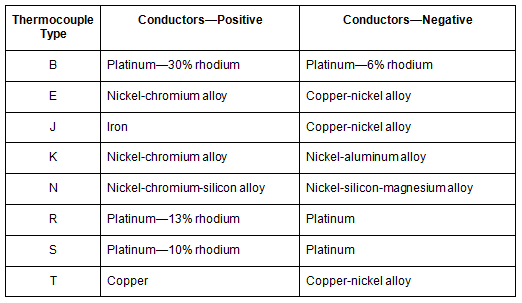Temperature sensors are used in different processes in pharmaceuticals. Different types of temperature sensors are used in different processes according to their accuracy needs.
There are following three common types of temperature sensors.

1. Thermocouple: These are most commonly used sensors for temperature measurement. These have high accuracy and less expensive than others. Thermocouples have a wide operating range. It has two different metal conductors joined together at their both ends. When these two junctions are exposed to two different temperatures, a thermal emf is produced in the circuit. One junction is kept cold as the reference temperature. The emf produced, depends upon the difference in temperatures of both junctions. This emf is used to calculate the temperature.
The thermocouple can be used to measure a wide range of temperature from -200 to 2000 °C. Thermocouples are covered with the metal, teflon or other shield to protect from different environmental conditions.

2. Resistive Temperature Detectors (RTD): Generally nickel or platinum is used in RTDs. RTD works on the change in resistance to metals when the temperature changes. When temperature increases the resistance of the metal also increases and resistance decreases upon cooling.
A constant current is passed through the RTD and temperature is determined by using the change in the resistance of the metal at different temperatures.
3. Thermistor: These are electrical resistors whose resistance changes at a change in temperature. The word Thermistor is also derived from the “Thermal Resistor”. These are smaller in size and used in small devices as phones, televisions, stereos etc. These have a small temperature measuring range but have a great accuracy. These are made from metal oxide as nickel, manganese or cobalt. These types of temperature sensors have a fast response to the temperature change.


Nice
ReplyDeleteMore informative the different type of thermocouples
ReplyDeleteSimple and clean explanation
ReplyDelete